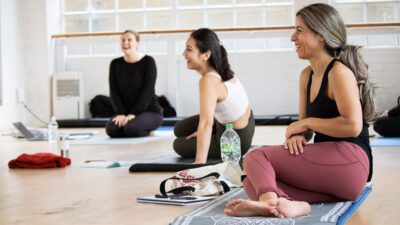
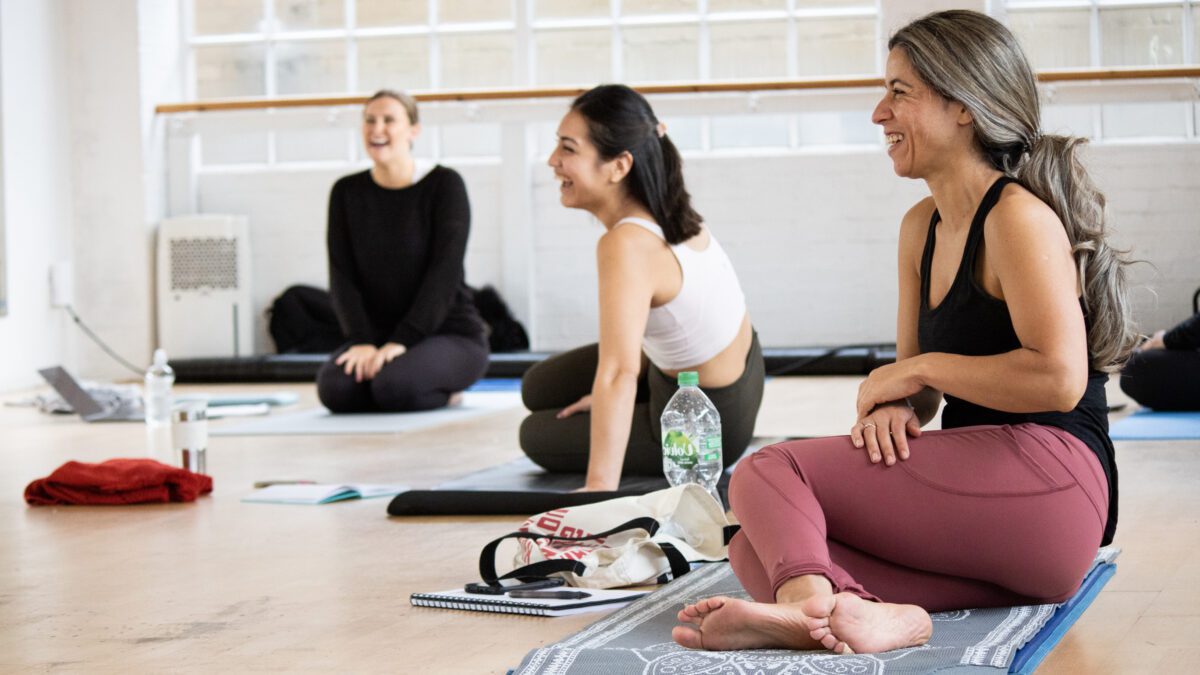
Conditioning Pilates for Athletes
We worked with education experts Human Kinetics to bring you insights on conditioning Pilates for Athletes.


We worked with education experts Human Kinetics to bring you insights on conditioning Pilates for Athletes.
These advanced Pilates exercises will act as great conditioning work for an athlete. Find the full routine in Pilates, Third Edition.
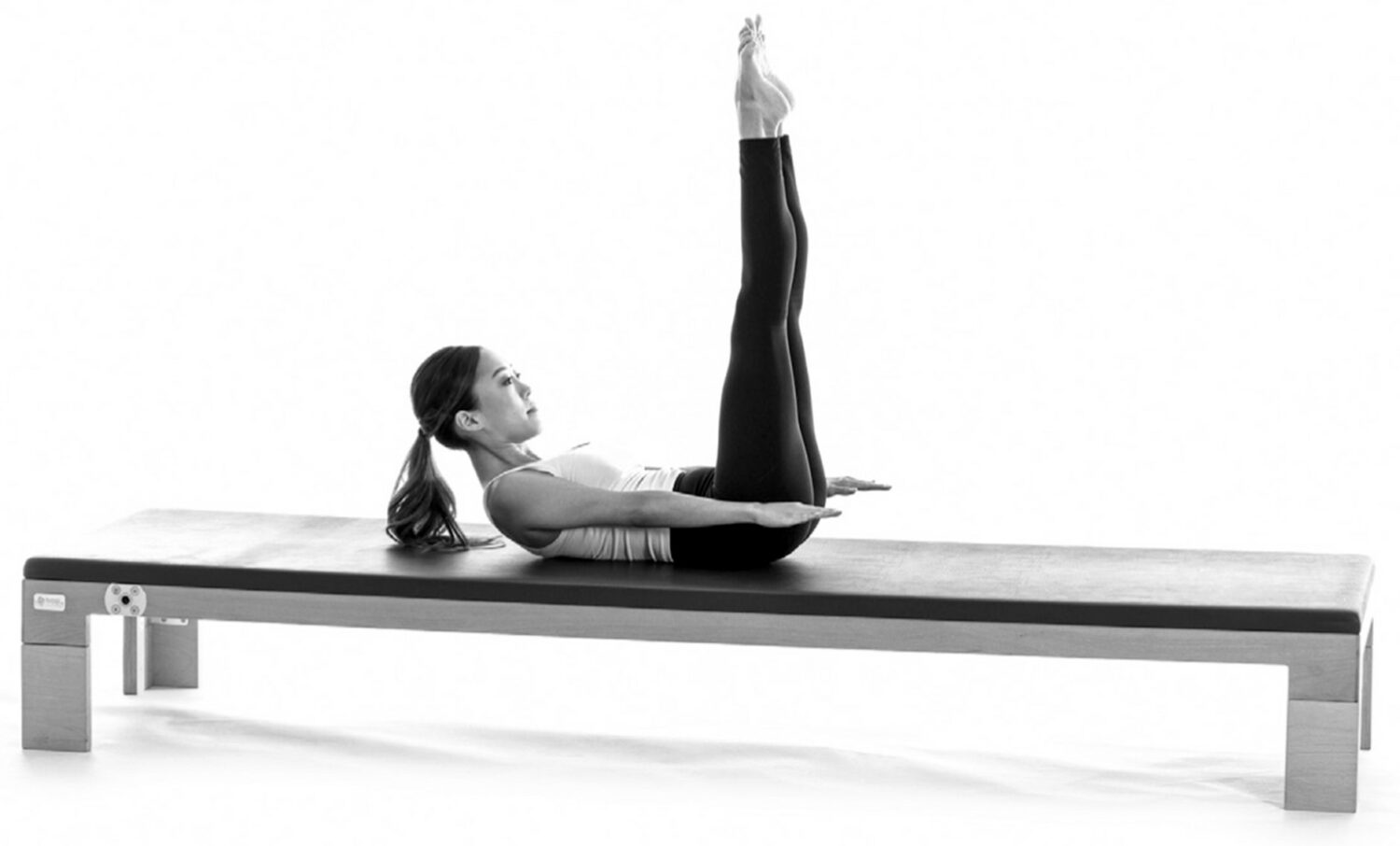
This exercise is one of the signature abdominal exercises of the Pilates method. The name of the exercise is derived from the breath pattern—each inhalation and exhalation is a single breath cycle and should last for 10 counts (5 counts for the inhalation and 5 counts for the exhalation). This breath pattern is repeated 10 times, totalling 100 counts.
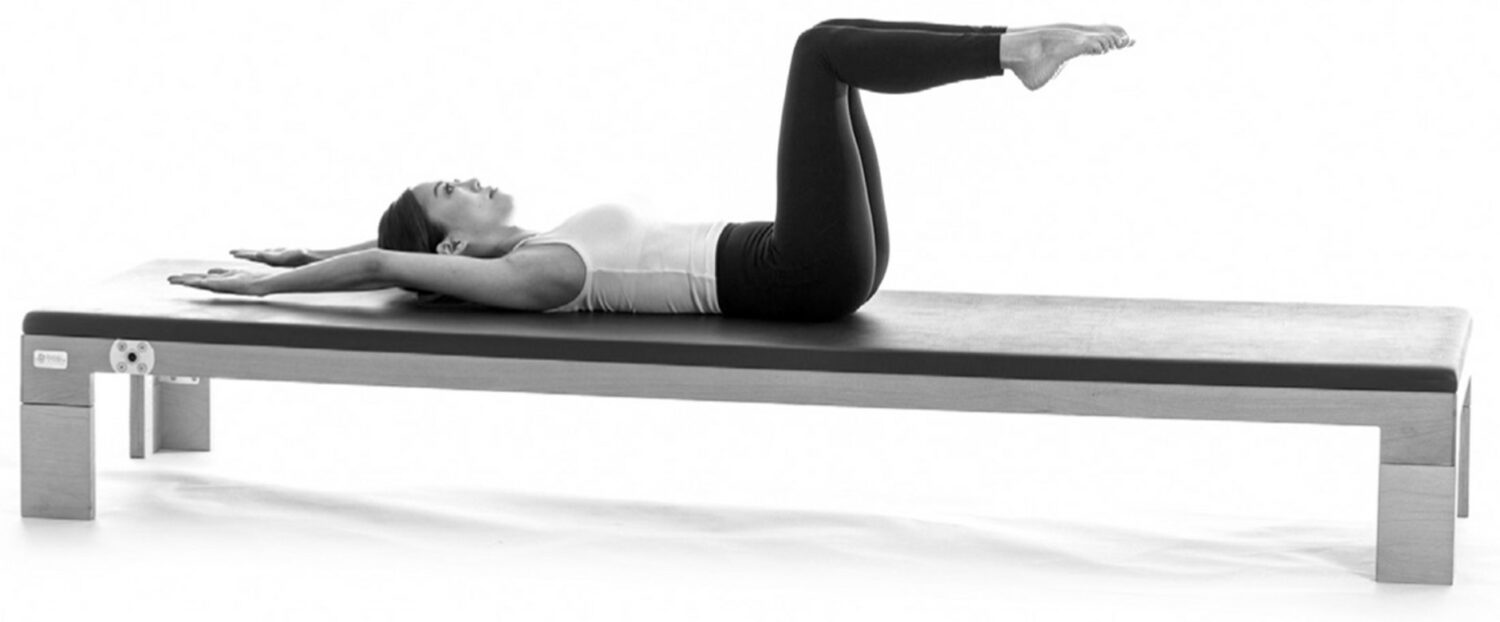
Setup: Lie supine with the legs in a tabletop position. Hold the arms straight, directly overhead and shoulder-width apart, with the palms facing up.
The Mat: Hundred can be counterproductive if certain elements are not in place, including strong abdominals and the ability to lift the trunk into adequate spinal flexion. When doing the Mat: Hundred, keep the legs at a height that your abdominal strength and control can support—legs perpendicular to the floor is less challenging; legs lowered toward the floor is more challenging. Ultimately, the lower back must not lift off the mat. The classic version of the exercise, as Joseph Pilates performed it, is with the feet at eye level. However, keeping the legs at this height demands a great deal of strength, control, and practice.
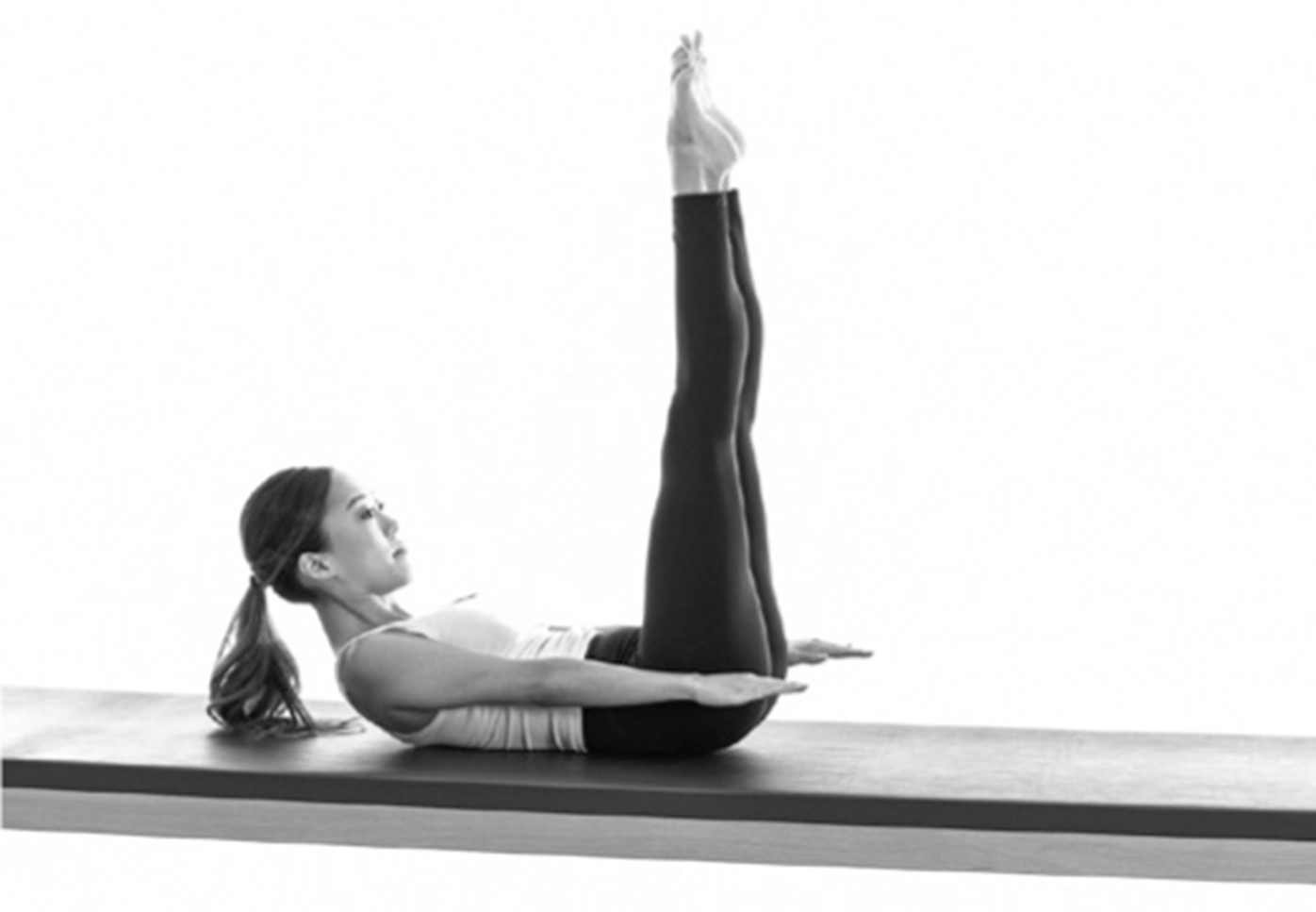
Exhale. Lift the trunk into the Mat: Chest Lift position by drawing in the abdominals, lifting the upper spine, and lowering the arms to the sides of the body until they are parallel to the floor. Allow the lumbar spine to sink into the mat when lifting the upper spine, vertebra by vertebra until the scapulae have lifted off the mat. Simultaneously straighten the legs to the appropriate height for you (the lower the legs are held, the more challenging the exercise becomes).
Inhale. Maintain the consistent height of the upper trunk while keeping the legs stable and focusing on the contraction of the abdominals. Prepare to begin pumping the arms for 5 counts.
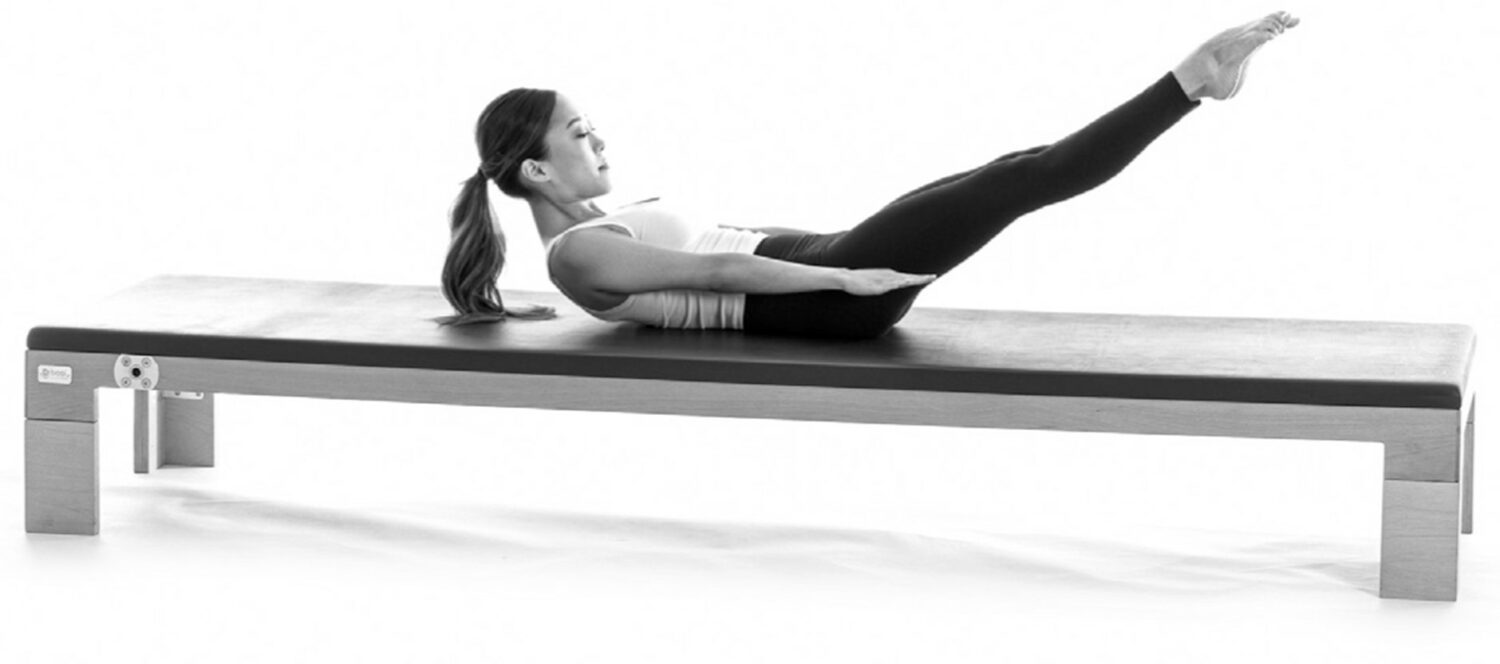
Exhale. Pump the arms up and down with a small pulsing movement for the duration of 5 counts. Legs on a diagonal with the feet opposite the eyes is the optimum position.
Inhale. Continue to pump the arms for the duration of 5 counts. Keep the arms close to the sides of the body. Repeat the breath cycle (exhale and inhale) 10 times.

Exhale. Bend the legs to tabletop position and lower the spine, taking the arms overhead. Return to the start position.
The key to the shoulder bridge is maintaining a stable pelvis throughout. Feel the hip flexors stretching as the leg swings down and the hamstrings stretching as the leg swings up. The hamstring stretch is enhanced by the dorsiflexion of the foot.
Orient the pelvis toward a posterior tilt to prevent hyperlordosis and pressure on the lower back, particularly when the leg is lowered.
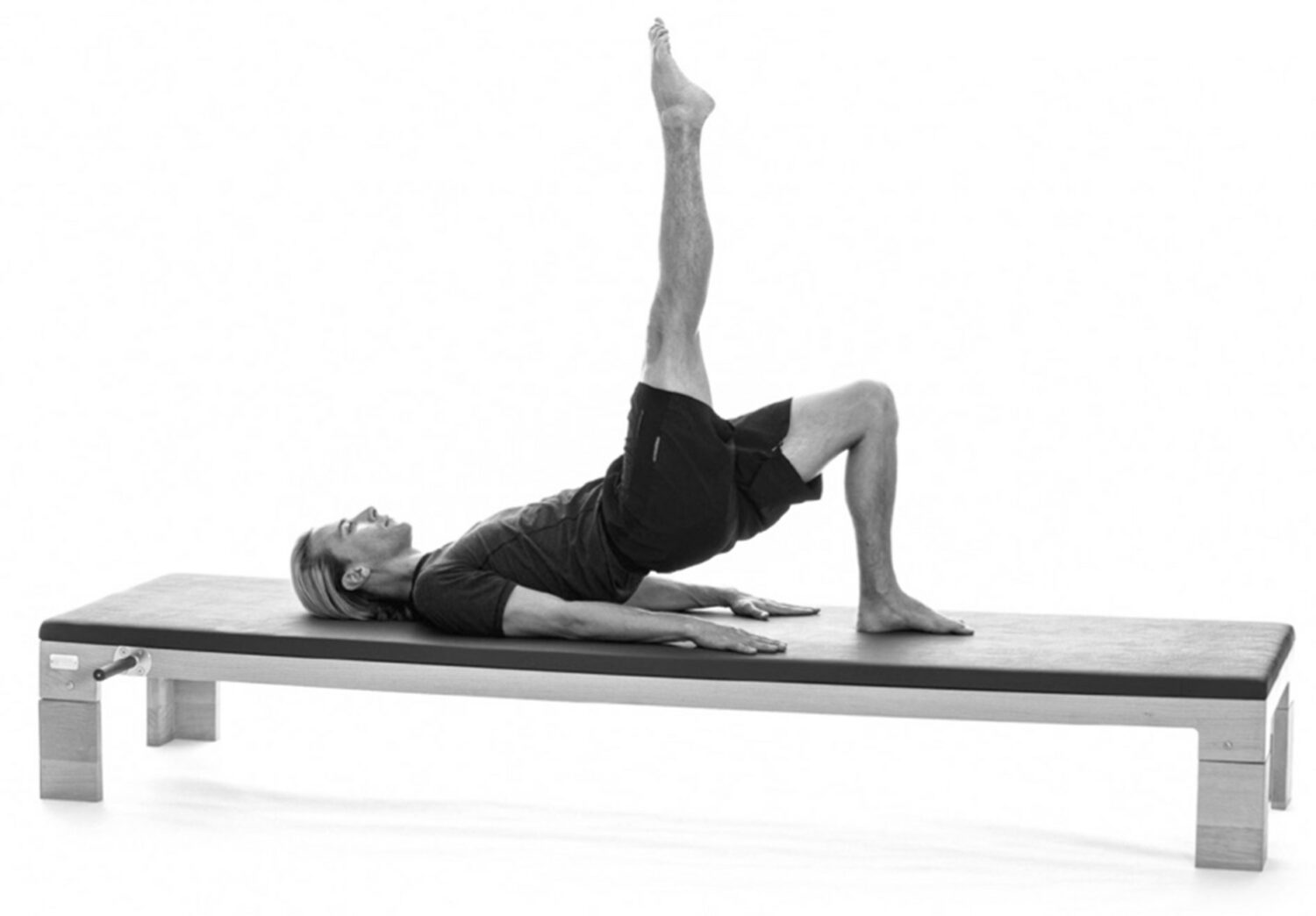
Setup: Lie supine with the knees bent and the feet firmly placed on the ground. Perform the Mat: Pelvic Curl, pausing in the top position (start position). Lift one foot off the ground, bending the knee toward the chest, and then straightening the leg upward, plantarflexing the foot and pointing the toes directly toward the ceiling.
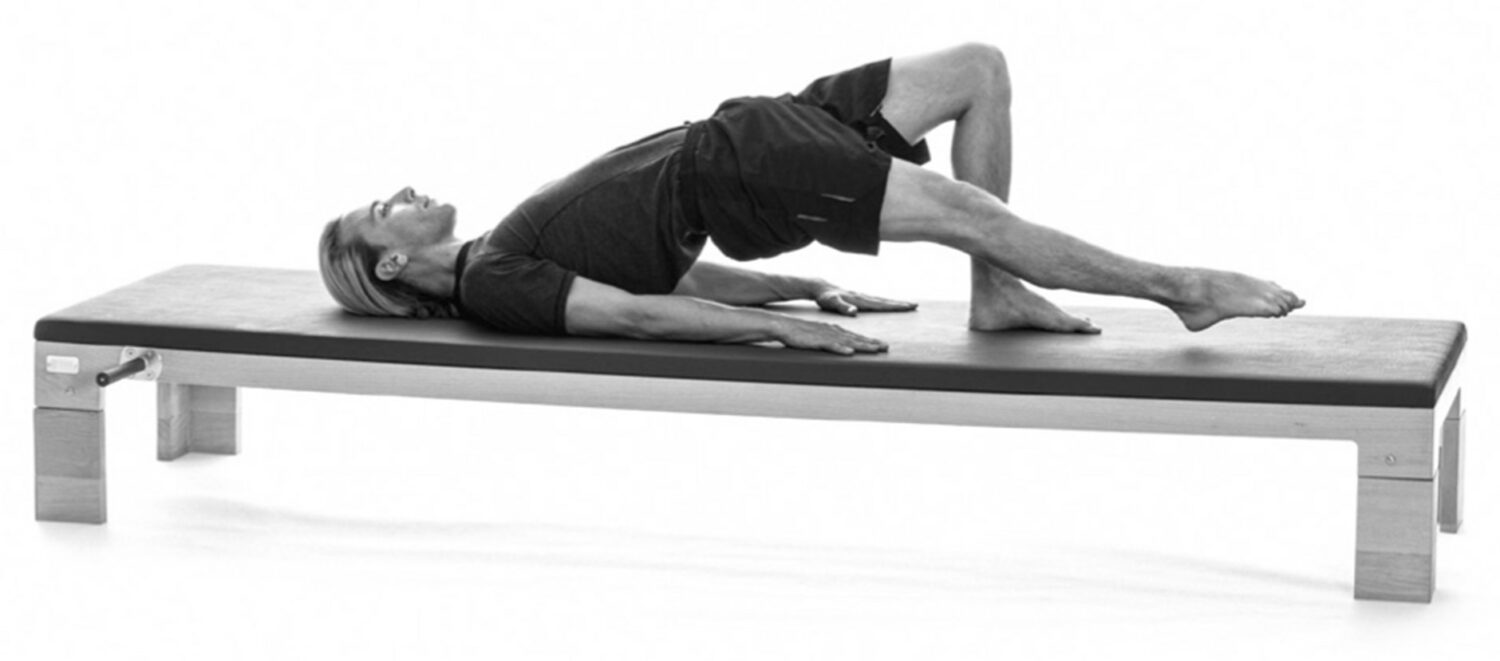
Exhale. Lower the straight leg toward the floor with the foot plantarflexed (touch the floor if possible).

Inhale. Kick the straight leg upward, as high and close to the chest as possible, dorsiflexing the foot. After 5-10 repetitions, pause with the leg reaching toward the ceiling and plantarflex the foot. Bend the knee and place the foot on the floor. Return to the start position. Switch legs and repeat on the other side. Complete the exercise by placing both feet on the mat and rolling down to the mat.
The rotation involves not only the trunk but also, very significantly, the shoulder. A single shoulder supports the weight of the body in a suspended position and accommodates its rotation, with most of the movement occurring in the glenohumeral joint. This is a tall order for this small, relatively unstable, muscle-dependent joint.
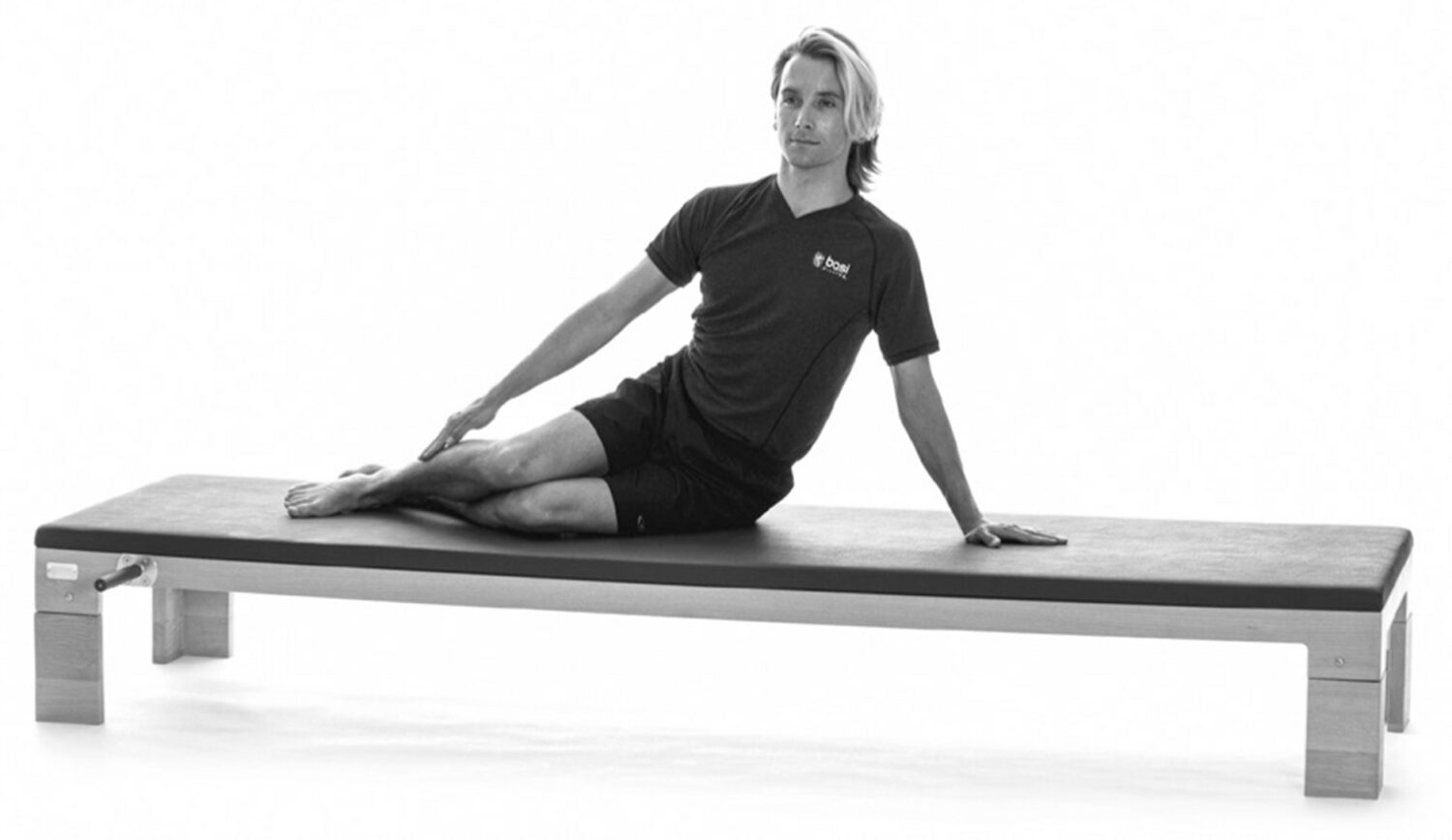
Setup: Sit sideways with the weight on one side of the pelvis. Bend the legs and place the top foot in front of the bottom one. Rest the upper body weight on the supporting arm while maintaining strong scapular stabilization and recruiting the abdominal obliques. Rest the other arm on the side of the legs.
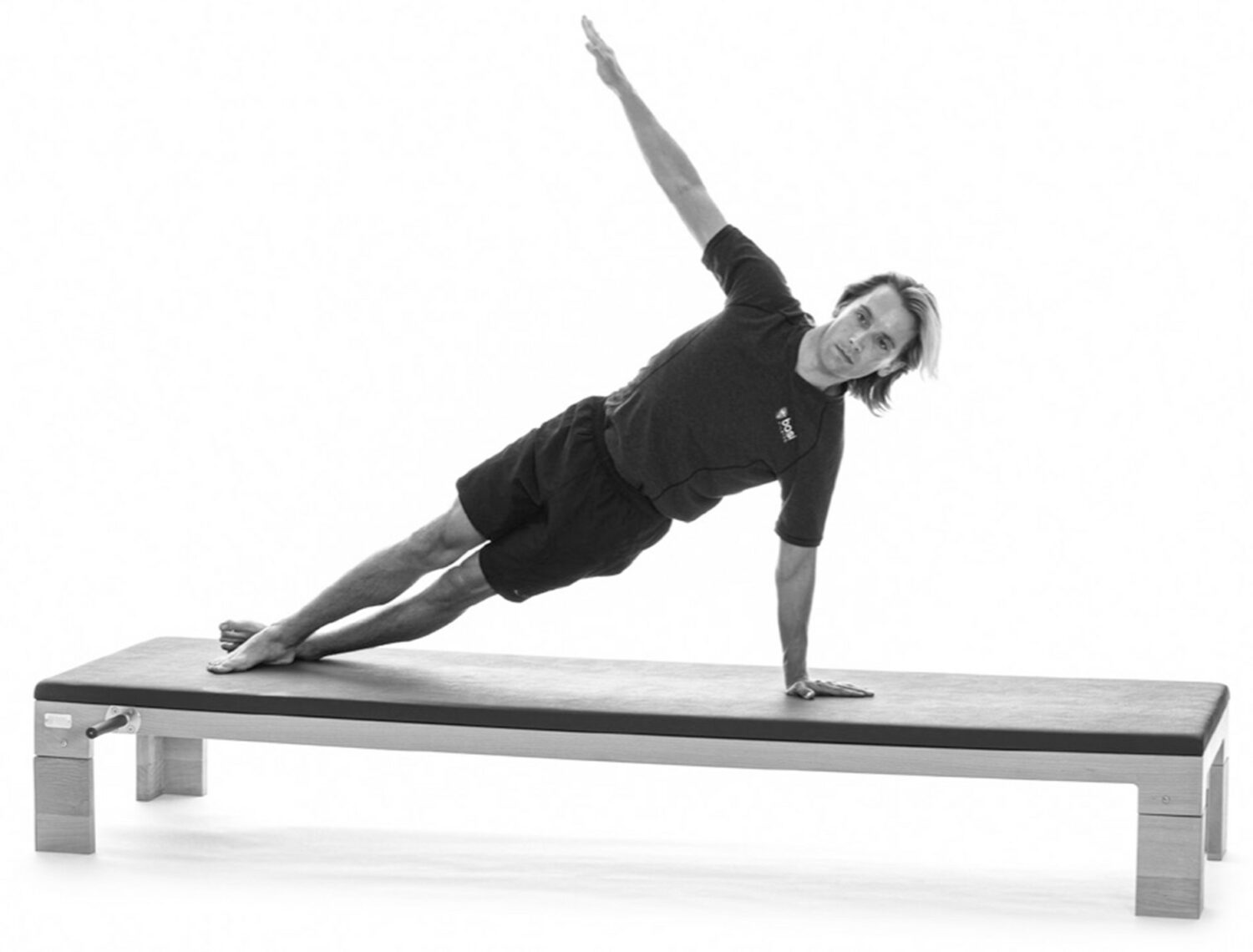
Inhale. Lift the pelvis away from the floor while straightening the legs, establishing a straight diagonal line with the body. Raise the upper arm to shoulder height, creating a 90-degree angle between the arm and the trunk, fingers directed diagonally toward the ceiling.
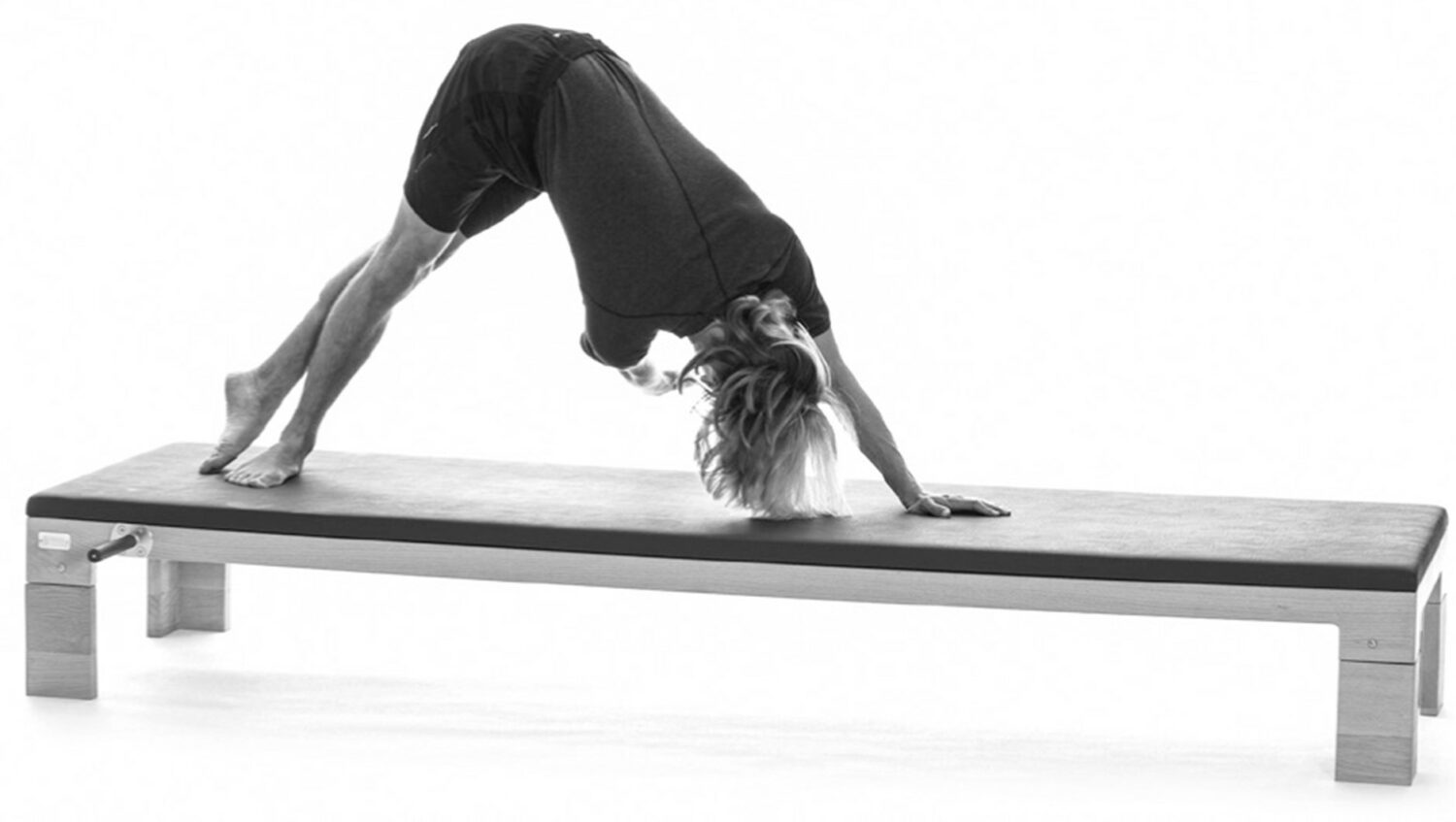
Exhale. Lift the pelvis as high as possible and rotate the trunk as the free arm reaches under the body. Distribute the weight between the hand on the floor and the front foot.
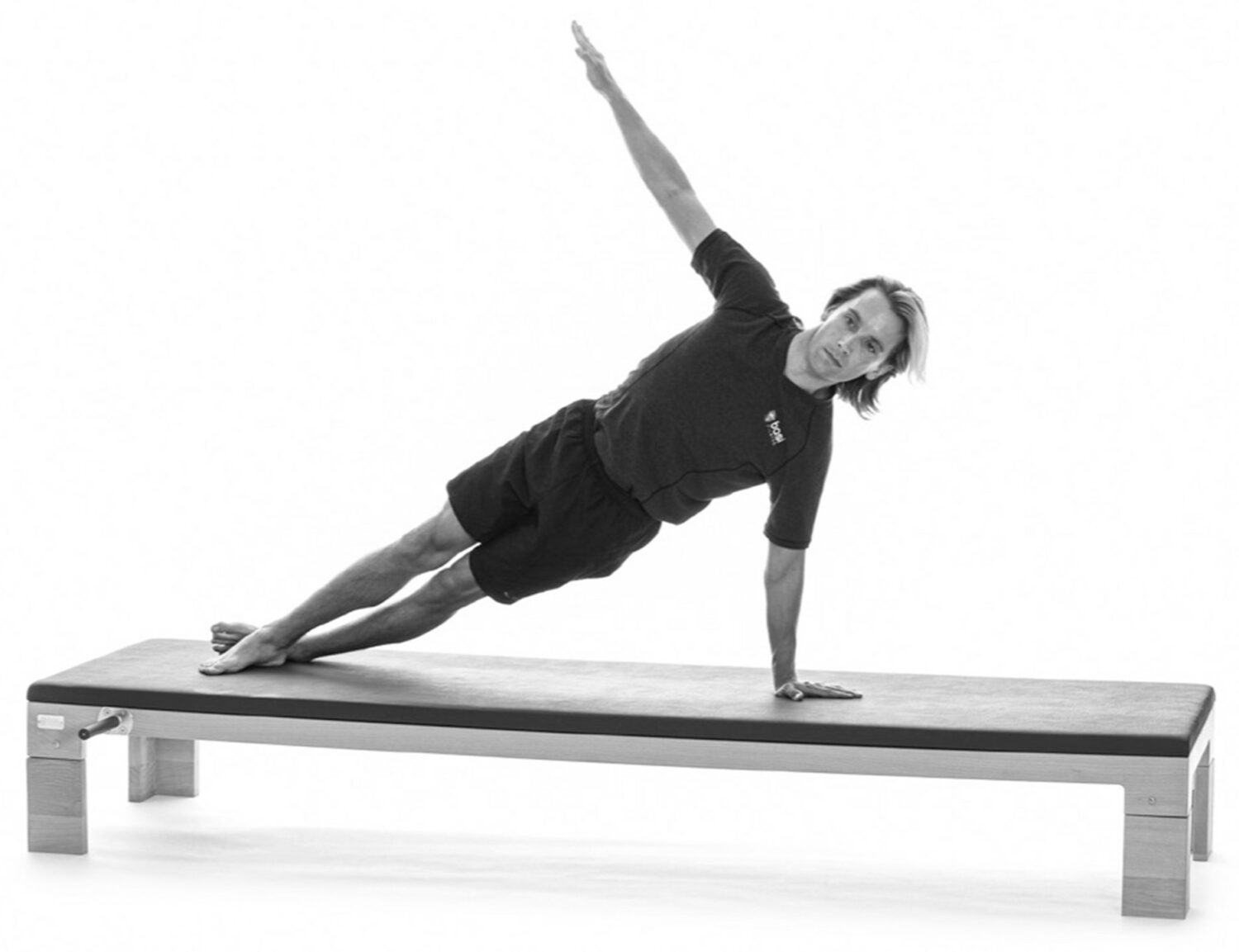
Inhale. Return to the previous position with the body on a straight diagonal line and the free arm reaching up, creating a 90-degree angle at the shoulder joint.

Exhale. Bend the knees and lower the body to the start position, keeping the pelvis slightly off the mat (if possible) or placing it lightly on the mat. Repeat 3-5 times before switching to the other side.
This content was excerpted from Pilates, Third Edition, where you can find further exercises, routines and full cueing and instructions.